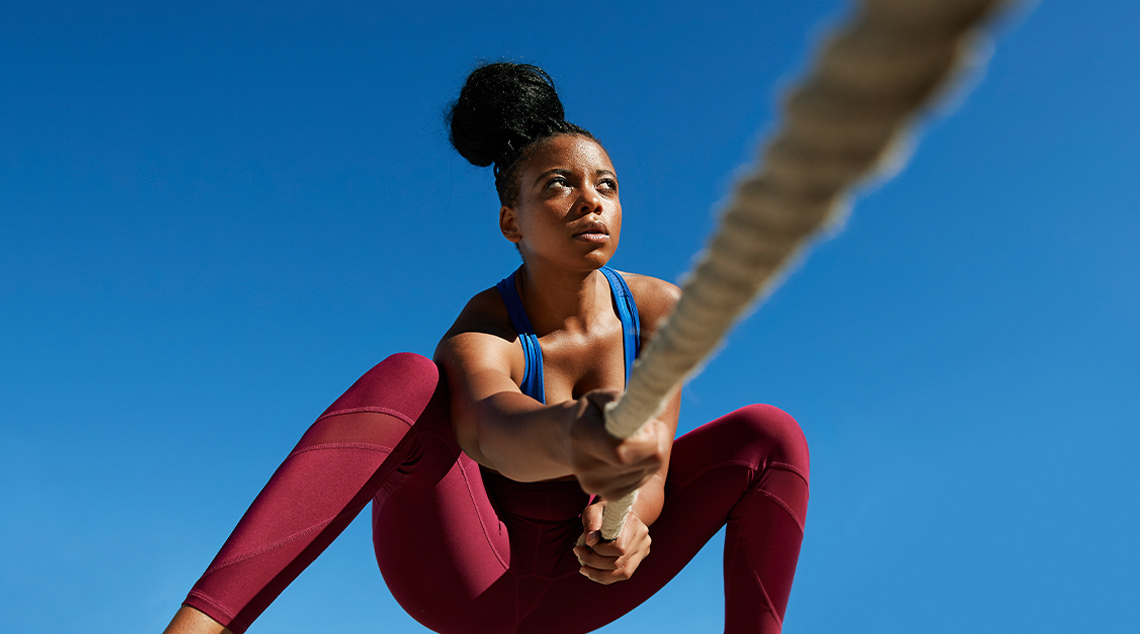Basic instinct: How primal movement can help you get fitter and stronger
Primal movement – getting fit caveman-style – is being applied to modern fitness programs. Here’s how the action of our ancestors can help you get stronger.
There’s a reason primal movement is one of Pinterest’s most predicted fitness trends for 2023.
It’s all about getting back to basics and the natural “primal movements” the animal kingdom (and our ancestors) have been doing naturally for thousands of years: think crawling, lunging, climbing, reaching and more.
The science behind primal moves
“At university the way we learnt to think about movement was in simple movement patterns – pushing, pulling, hinging from the hip – which is what primal movement is all about,” exercise physiologist Alex Marriott explains.
“If you think about the actual movements, you’re talking about big and large movements, using big groups of muscles all at once, it’s a terrific way to train the whole body.”
A US study found bodyweight training incorporating animal poses, transitions and pattern – also known as quadrupedal movement training – significantly improved functional movement and range of motion.
“If I’m writing an exercise program for a client, I’ll always include those sorts of things – pushing, pulling, bear crawls, squats, lunges, deadlifts, and overhead presses,” Alex says.
“It’s great for health because those compound strength movements not only build up muscle but are also extremely important for bone density when performed with heavy loads, particularly if you’re over 50.”
Instinctive benefits of primal moves
Dave Mummery, owner of Primal Moves, where classes are offered in ZUU and Animal Flow, says primal movements are far from primitive.
“Since the beginning of human existence our ancestors had to move regularly through the day, gathering food, shifting stones and hunting prey,” Dave says.
“Human beings aren’t designed to sit at a machine and push just in one plane of motion.”
Dave says that unlike traditional exercises that focus on isolated muscles, primal movement engages multiple muscle groups at once, so it’s a full-body workout, centred on true functional fitness.
How to move with animal groove
Dave describes Zuu as punchy, quick and “more boot camp style and high cardio”, while Animal Flow is “balletic and more controlled”.
ZUU, created by Aussie movement coach Nathan Helberg, fuses cardio and resistance training with animal movements like frog squats, bear crawls and geckos.
According to Dave, it reaps results with beastly speed.
“I’ve been in the fitness industry since 1999 and was a spin instructor for 14 years but when I was introduced to ZUU, I was blown away by how quickly my body changed,” Dave says.
“I felt stronger and more mobile.”
Whereas Animal Flow, created by fitness educator and movement expert Mike Fitch, is a ground-based bodyweight workout combining strength, power, flexibility, mobility and coordination.
“It’s more of a choreographed class and a real brain workout as well, getting the right and left side of the brain working,” Dave says.
How primal movement can improve your fitness
Primal movement can complement a number of activities, according to Dave’s wife, Lizzy Fawns.
“It’s beneficial conditioning for rugby and AFL where people are scrambling for the ball and we get quite a few passionate sports people, including surfers who want to improve their mobility on the board,” Lizzy says.
Whichever way you do it and for whatever reason, embracing primal moves is a fun way to exercise and can be modified to all fitness levels, according to Dave.
“In both ZUU and Animal Flow there are regressions to every move which are all about building a strong foundation and making sure that you master every move,” he says.
“The whole point is that ultimately you move better for life, it’s exercise that supports your everyday life.”
More healthy lifestyle lessons we can learn from previous generations:
- Ancestral eating: Should you take meal inspo from your elders?
- New Nordic diet: How Viking-inspired eating can boost health
- Old-school cool: 5 fun retro activities that are great for fitness
Written by Liz McGrath.





